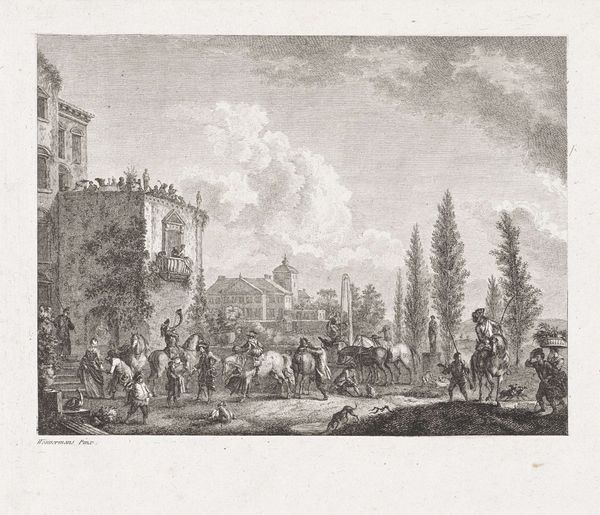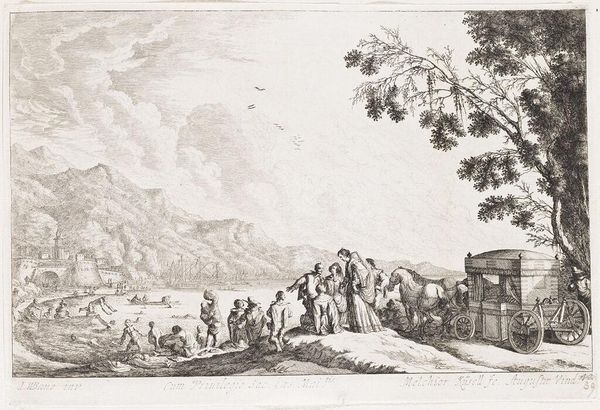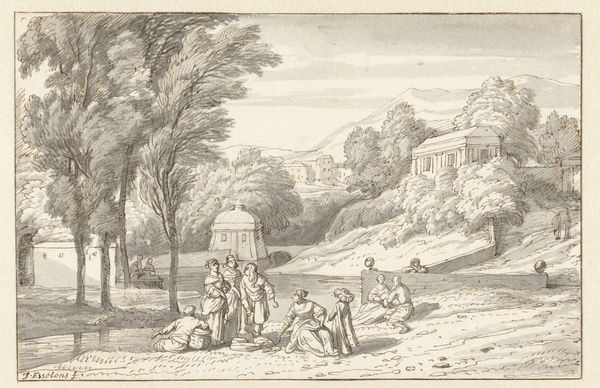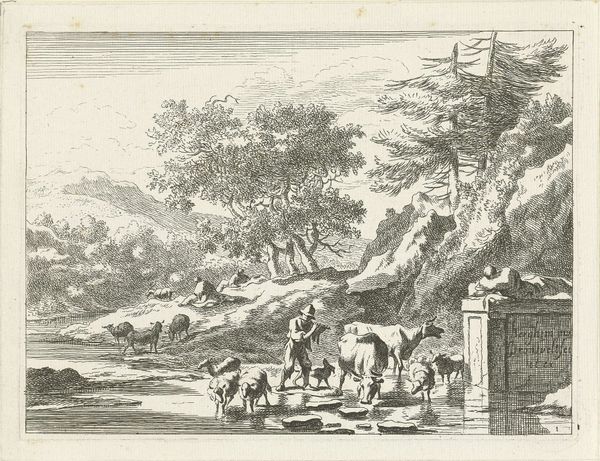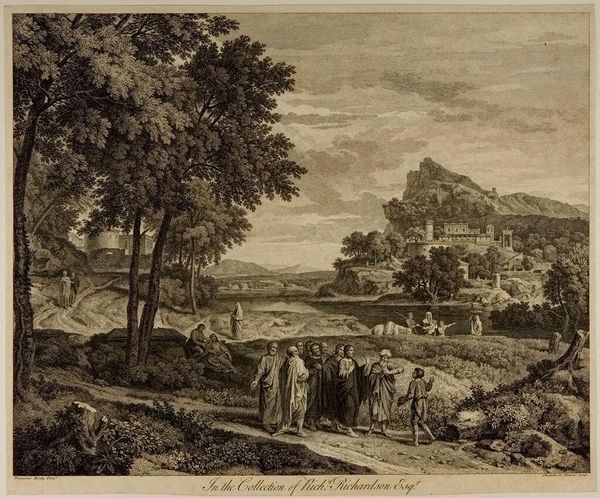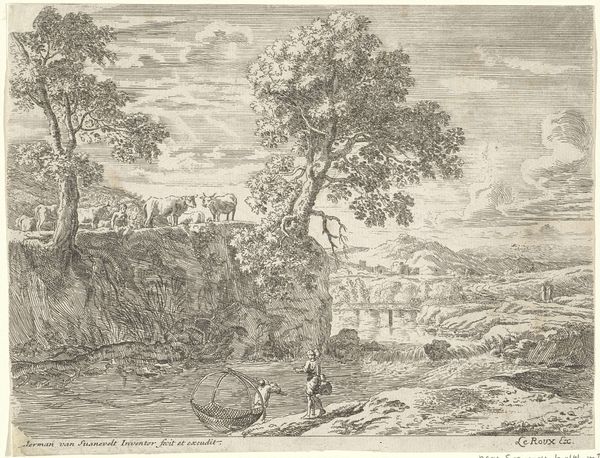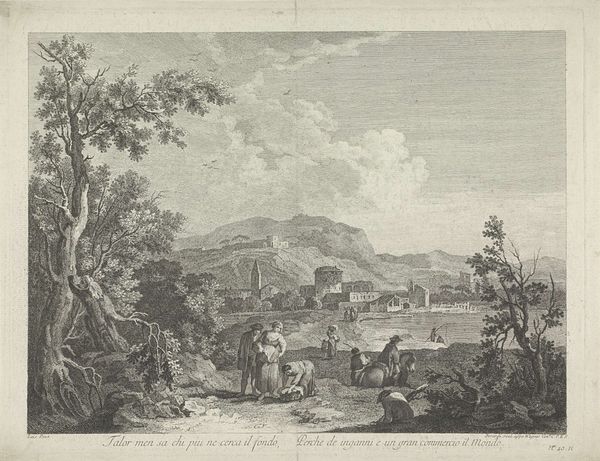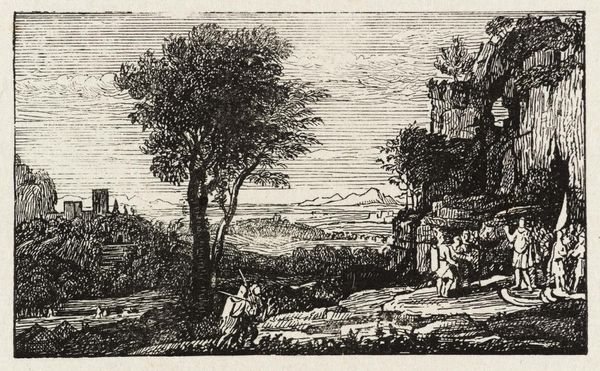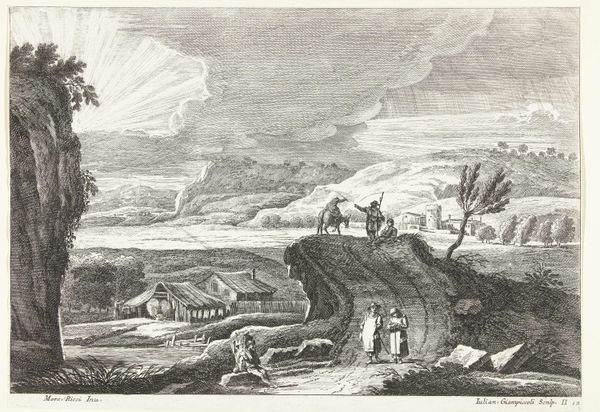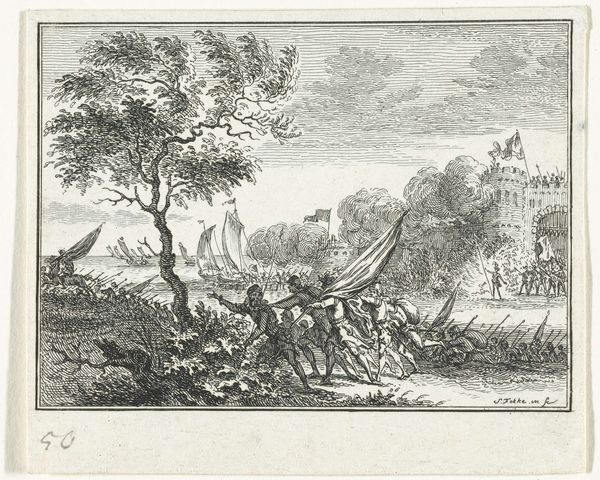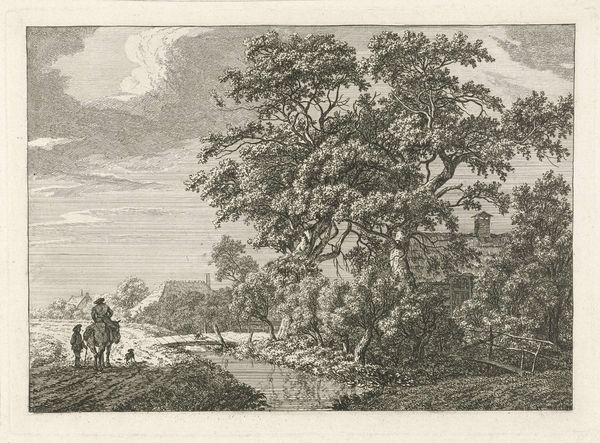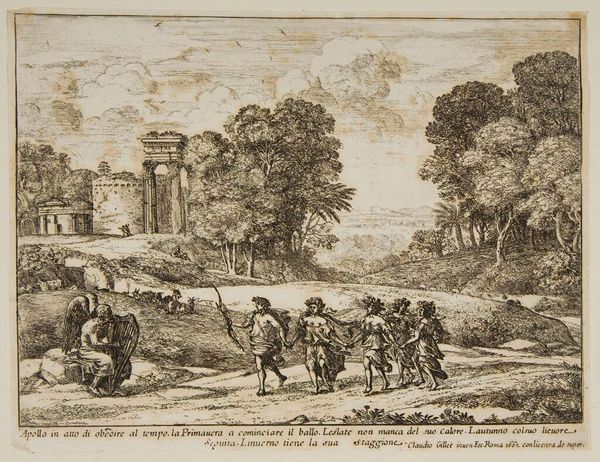
print, engraving
#
baroque
# print
#
old engraving style
#
landscape
#
genre-painting
#
italian-renaissance
#
engraving
#
realism
Dimensions: height 250 mm, width 365 mm
Copyright: Rijks Museum: Open Domain
Curator: This is Davide Antonio Fossati’s “Landschap met vrouwen die de was doen,” or "Landscape with women doing laundry", created in 1743. It’s an engraving. What's your immediate impression? Editor: Bleak. Stark. Despite being a scene of domestic labour, it evokes a sense of social and economic disparity, even a critique of the period. The rendering of labour here feels devoid of joy. Curator: Yes, there is a sense of somberness in the quotidian here. Look at how Fossati uses hatching and cross-hatching. It’s a veritable map of lines that carve out the contours of the women, imbuing them, and the landscape, with a weighty gravitas. It gives this mundane act of laundry a ceremonial importance, almost timeless in its repetition. Editor: And I see those lines emphasizing the hierarchical divisions – the women working in the immediate foreground versus those at the top of the structure. The laundry hanging on the lines feels almost like a performative display of cleanliness against the backdrop of possible poverty, doesn't it? There is a stark reminder of gender roles in the endless cycle of unpaid domestic labour in a pre-industrial world. Curator: You pinpoint something quite significant: those women positioned at varying levels form a chain, almost an emblem, a tableau representing their contribution to society. The action is at once universal and deeply rooted in cultural traditions of cleaning and purification. Consider too how landscape here becomes gendered space. Editor: Exactly. And beyond the labour itself, there's the spatial hierarchy: a layered power dynamic where women occupy and enact these very different aspects of the same choreographic stage of inequality. It speaks to the larger political economies that constrained the opportunities available to women in the 18th century. Even within this representation, the landscape feels like a commentary. Curator: Indeed. The symbolism here transforms the engraving from simple genre-painting into a statement about the rhythms and societal place for women's labor. Fossati has embedded cultural memory into the very visual language of the work. Editor: For me, reflecting on the piece highlights the often invisible realities behind polished facades, then and now, using art as a call for empathy and, ideally, some shift in entrenched social practices. It reminds us to actively see those performing the work we may take for granted.
Comments
No comments
Be the first to comment and join the conversation on the ultimate creative platform.
